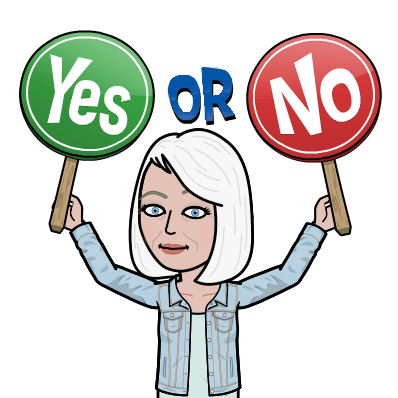Clickity vs. Clunkety
I get a ton of of email.
It’s an occupational hazard, as I sign up for tons of things that help me keep up with what’s so in marketing and branding trends across a broad range of topics.
One of my more recent sign-ups was with an online marketer who came highly touted as a list-building genius and all ’round go-getter worth paying attention to. I got his free report, and like clockwork, I started getting emails every day from him.
The one that turned me off had this subject line: Bad News.
Bad News
Just that, a 2-word subject line. Bad News. I’ve seen enough emails to be well-acquainted with scarcity strategies, but this was blatant with a tinge of alarm.
So I opened it, only to find some long-winded, convoluted claim that what was bad new for the sender was excellent news for me, a prospective customer. It urged me to jump right ahead and click to claim what was being pitched in the body of the message and its links.
The problem is, I did not want to. I was so annoyed by the insincerity of that subject line, it made me want to unsubscribe immediately. This was a thorn being called a rose blossom, symbolizing what is wrong with marketing, and why it has a checkered reputation.
“Bad News” is not a phrase to throw around lightly. This email marketer cried wolf. All that did was turn me off completely. I opened the email out of professional curiosity; and because he’d been endorsed by someone else I trust. This fellow’s previous set of messages had begun to build a glimmer of trust. But with this, he lost it all. I was beginning to get turned off by his daily email onslaught anyway, and this “Bad News” email was annoying enough that I didn’t even bother watch the free video. Nor was I enticed by his big discount incentive. Unsubscribe is what I did instead of buy.
Clickity vs. Clunkety
I have a brilliant friend who says she’s a perfect example of the everyday consumer.
She’s discovered over the years that her instincts are a reliable duplicate of mass market taste. If she likes something instantly, it’ll sell. If she doesn’t, it won’t.
Her insights always remind me of the way we test crystal glassware for quality. If we click it with something hard, and it rings or pings with a beautiful sound, that’s fine quality. If it makes a a sour, dull noise, then meh: it’s cheap, even junky.
What I love about what I call the Clickity vs. Clunkety test, is that it’s instinctive, and fast.
We know when something sounds melodious to us, and when it’s a turn off. It does not require lengthy analysis.
As marketers, we get only a few seconds before our prospects have reacted to our image, message, or offer. They follow their instincts no matter how much time we spend trying to persuade them with hard sell, data dumps, or our traditional secret weapon, repetition. Repetition works, but only where “NO” has not taken root.
Apply a little Clickity vs. Clunkety testing to your own marketing. It works before you go public, but at later stages can help you identify strengths and weaknesses in your visuals, messaging, perceived value, or even pricing, that may need correction.
The Customer is Always Right
This philosophy falls by the wayside frequently and randomly, here in the midst of decade #2 in the 21st Century.
Recently, three instances really stood out for me, when customer service staffers let me know in no uncertain terms that I was an inconvenience in their day.
One was a teller/manager at my local bank, which has unaccountably taken to calling itself a “store” like any garden variety retailer. Way to lose your distinguishing mystique and stature, gang.
Another was the hospital parking lot attendant who was one of the student work/study crew. He would rather I paid with a bank card, which he made clear would be easier for him than the cash I proferred. Counting it was such a pain for him.
The third was a career waiter (a longtime senior staffer at a local bistro) who seemed unhappy to have 6 of us as his customers, one of whom is a loyal weekly regular. When reminded of his promise to bring some olive oil, he complained he had to enter all our orders to the kitchen and it was taking him extra time to do so. Really?
And yet… the opposite occurs in my world just as regularly. In a different parking lot (a local museum), the attendant went way out of his way to help untangle a backup at the entry gate. Then, without my even asking, routed me to a special parking spot that sped me along easily. Mostly, I noted how calm, cool, and collected he was being, in the face of uncomfortable 90-degree weather and in the midst of an episode with inherent stress. What a pleasant person to start my visit.
Why is the customer always right? You know why: because they never have to come back.
We who have been in business for a while need to pass this wisdom along to business and staff novices. Often this lesson gets learned the hard way, but it’s powerful in person, over the phone, and in online support chats. It’s actually your entrée to customer loyalty, a core marketing prize.
What’s with all the Bitmoji, Diane?
Well, these little characters are my latest marketing toy. They’re more fun than standard issue emoji, since they can be personalized. (Although, Facebook turned all their customizable avatars kinda weird-looking last year, perhaps to avoid any Disney-esque styling encroachments?)
Anyway, I came across a news report today on BetaKit.com about the parent company Bitstrips, lauding their success in being acquired by Snapchat, and how their Bitmoji appeal has outpaced the original digital comic strip feature.
Naturally, I wanted to see for myself how easy it would be to create my own avatar. Another hot new app I downloaded earlier this week stalled so badly, repeatedly, that I deleted it and gave up on it. But Bitmoji was as easy as pie to get up and running. I’ve noticed others using it here and there, and was impressed by their ability to create avatars with a pleasantly cartoonish resemblance to themselves. So I had some fun making my own, and voila!
In an era when digital content is the way to play, creating a unique presence is a delightful idea made easy in a cartoon motif 😉
Cheers from your online Diarist.
— Diane
P.S. I want to credit the inspiration source for the phrase “Clickity vs. Clunkety.” I’d been playing earlier with words, looking for a good word to pair with ping, or chime or clink or thud. Then along came a webpage from Vanderbilt University, explaining a nifty reading process for building vocabulary that they call the Clink and Clunk Strategy. Click here for an explanation of how this works.




